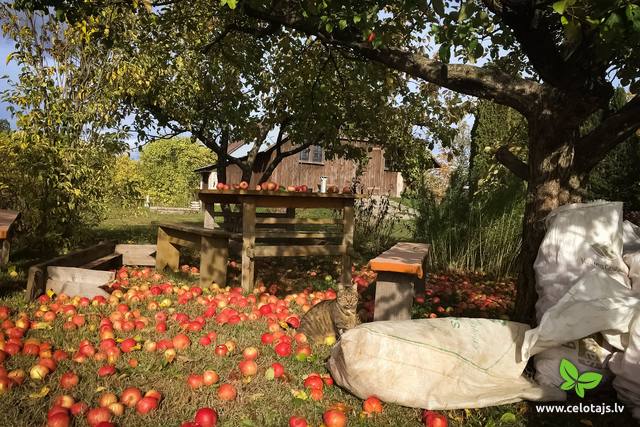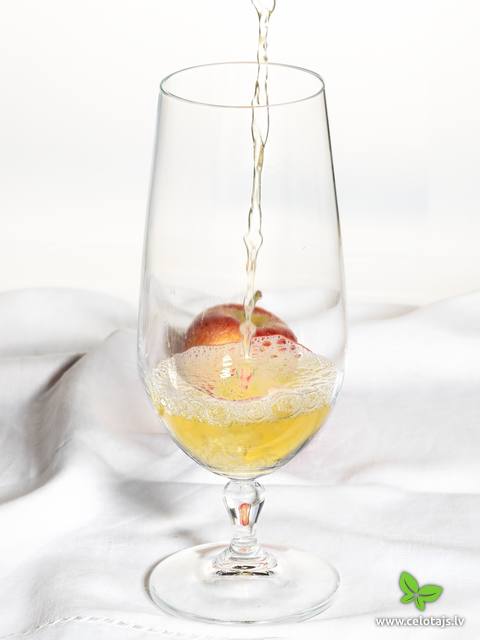Cider made in Latvia - history and traditions
Latvia: a Land of Apples and a New Cider Country
Latvia is a land of apples, so making cider here is natural! The ancient apple cultivation traditions and the diversity of high-quality apple varieties in our country make for an important advantage in Latvian cider culture. In our climate, it is very tricky to grow good grapes for producing wine; however, the weather conditions are particularly well suited for making apple cider. It is a natural advantage that has been noticed and is being used by local cider producers with increasing excellence. The smaller producers usually take part in the whole creation cycle themselves by pressing the aromatic and fresh apple juices in autumn and then creating natural craft ciders from them*.
*Craft cider is made from 100% fresh-pressed apples, fermented and matured in small batches without using any concentrates.
Environmentally friendly process
The production of such cider is an environmentally friendly process with a minimal impact on nature. A true gourmet appreciates flavour, however, a modern gourmet also considers what ingredients the food or drink is made out of and how this process affects the world. The good news is that the ecological footprint of cider is smaller than of many other drinks. The cider production process is relatively simple and consists of harvesting the fruits, pressing their juice, fermenting it, and filling it in barrels or other appropriate containers. This makes cider the “greenest” alcoholic beverage available in Latvia, as local ingredients are used in its production, little energy is needed during the fermentation process, and the transportation is local. Although the demand is higher for bottled cider, the most environmentally friendly choice is to use reusable kegs or recyclable aluminium cans.
Baltic Sea and Northern climate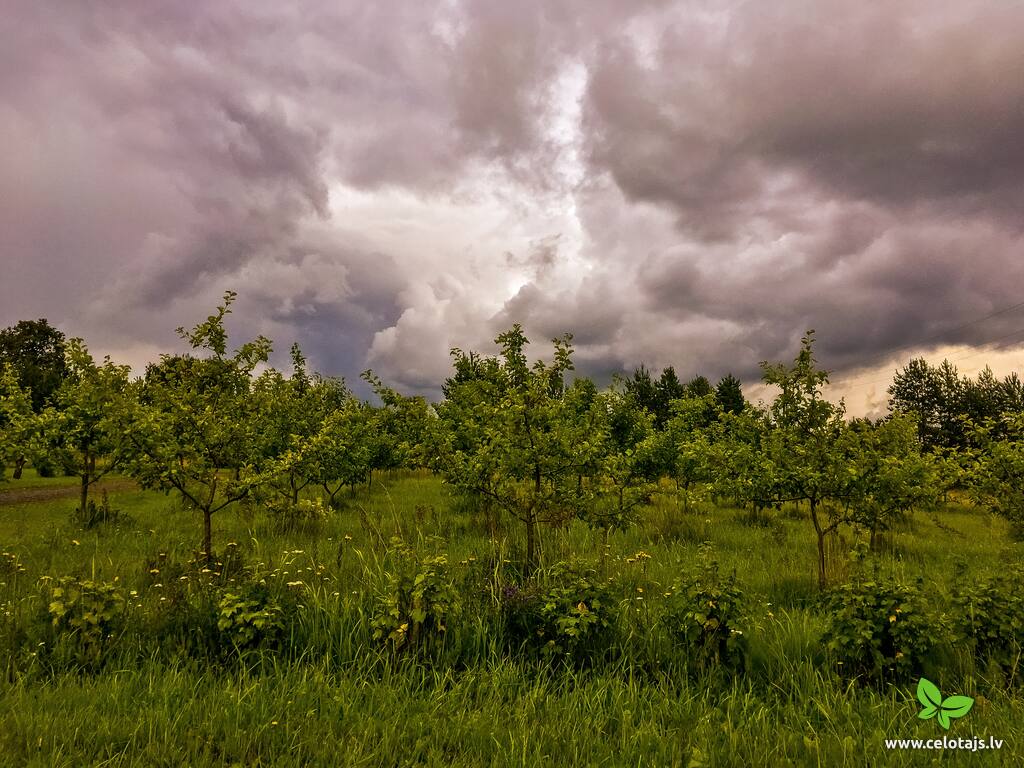
Our land boasts both ancient and recently planted orchards. The proximity of the Baltic Sea, bright summer nights and wide temperature range make the climate in Latvia ideal for growing apples, pears, cherries, plums, blackcurrants, and various other Northern European berries and fruits. One of the cider apple varieties bred in Latvia bears the name of the western Kurzeme seaside town Pāvilosta. Over the course of the last 10 years, common Baltic cider characteristics have formed, differentiating our ciders from the Scandinavian and Russian ones. Latvia can be considered as one of the world’s newer cider countries, where producers freely express their vision of cider making.
Why Choose Real Latvian Apple Cider?
It is important to be able to distinguish high-quality ciders made from fresh juice from products that are made using concentrate, sugar, water and artificial flavourings. You won’t always be able to find the list of ingredients on the label, however, industrial ciders can quite easily be distinguished by their much lower prices. Genuine ciders will offer an authentic connection to a particular place, producer and story.
Here are some reasons as to why you should choose and enjoy real cider:
- Cider can be as dry and sparkling as champagne and as cool and refreshing as beer! Dry, semi-dry or sweet cider can have the flavour and aroma nuances of citrus, fruit, flowers, vanilla, caramel, or even of smoky grass or ploughed ground, as well as many others. It doesn’t just taste of apples, in a similar way to how good wine doesn’t just taste of grapes.
- Cider is a great alternative to wine, given its relatively low alcohol content of 3.5-8%. It is not without reason that there is a growing demand for lighter drinks around the world. Cider is a good choice for any situation, be it a social evening gathering or lunch when wine would be too heavy and a lighter alcoholic drink would be preferable.
- Cider complements food exceptionally well. Flavour combinations aren’t limited to just wine. Cider doesn’t overpower light dishes, instead it highlights their delicate flavours. The great variety of ciders, together with their natural acidity, make them a suitable accompaniment for almost any dish.
- Each cider introduces you to a unique landscape, to its soil and climate, to the apple varieties that it consists of and of the style of its creator.
Apples grow exceptionally well in Latvia and cider is a true Latvian drink!
What Makes Latvian Cider Special?
Due to the cooler Northern European climate, Latvian ciders are fresh and aromatic and have distinctive acidity. They can be described as clear, sweet and sour, or dry, and they have a pronounced apple aroma and medium to light structure; they are pleasant to enjoy and don’t have any special tannins. The particularity of Latvian ciders is determined by the influence of the climate and soil on the apples grown here. Our region is characterised by clayey sandy soils, moderate summers, and a relatively long non-vegetation period.
More acidic, less tannic and bitter
Classic Latvian ciders are made from locally grown traditional varieties of autumn or winter apples, such as, the Sīpoliņš, Antonovka, and Pepiņš varieties, as well as from crab apples or wild apples which are good for the chemical stability of cider because of their high acidity levels, and provide an interesting structure and more complex flavour because of their phenols and tannins. In recent decades, new varieties of table apples have developed in Latvia that contain more sugar and therefore more alcohol, fewer tannins, and less dryness. This is why Latvian cider is also made using table apple varieties with well-balanced sweetness and aroma, such as the North American Cortland cultivar.
Cider with the elegance of white wine
The technology of cider production also has a significant impact, with it being different from the traditional methods used in France and England for most of the ciders produced in Latvia. Here, cider is made in a manner more similar to white wine. In Latvia, cider makers often use other fruits and berries to supplement their ciders and gain a variety of flavours. In winter, several cider makers also offer hot cider, which warms you up wonderfully, and just like mulled wine it can be served with a cinnamon stick or even with cloves and a slice of orange.
Nowadays, Latvian ciders are being recognised and awarded at international competitions in Germany, Spain, and even Japan.
How Did Cider Arrive in Latvia?
Although the first apple trees appeared several million years ago, it took a long time for people to learn how to make apple cider and Calvados (apple brandy). Apples were originally used exclusively for making these drinks because they were bitter and couldn’t be eaten raw. It was actually fairly recently that the first table or dessert apple varieties were bred. The wild Malus sieversii apple, which is native to the Central Asian mountains in Southern Kazakhstan, is the direct ancestor of most of the Malus domestica apple varieties that are widely cultivated today.
The art of cider making historically developed in particular in countries such as France, Spain, Great Britain, Germany, Austria and Italy.
In ancient times, cider was already known by the Jews, Egyptians, Greeks and Romans. In the Middle Ages, cider was a widespread beverage in almost all of the Mediterranean countries, also reaching the regions of Brittany and Normandy in France, which is still considered a major cider nation nowadays. Similarly, in England, where it has been known since ancient Roman times, cider is nowadays experiencing a true renaissance, with a significant increase in the number of producers, brands and consumers.
During the European colonialist expeditions, cider was also introduced across the ocean with the indigenous lands, particularly in North America, turning out to be more suitable for growing apple trees than barley for brewing beer. Although beer consumption is still much higher in the world, it is the cider sector that has experienced significant growth in demand over the last 10 years. Cider has become a popular beverage in Europe, the United States, South Africa and Australia.
In Latvia, the cider culture began to develop about 20-25 years ago, right after the collapse of the Soviet Union, when the first cider makers, often inspired by the traditional cider countries, saw interesting prospects for the local apples.
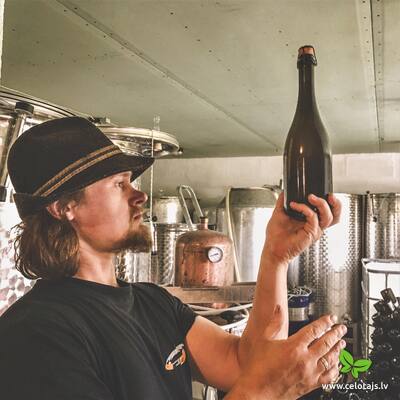 How Is Cider Made?
How Is Cider Made?
Traditional ciders are made once a year by using freshly harvested apples. This happens in autumn, sometime between August and November, depending on the apple varieties. Occasionally, some of the apples, especially ones of the very late varieties, are matured for a few days or even weeks after harvesting and only then crushed and pressed. The juice is not pasteurised; instead it is poured into fermentation tanks fresh.
Fermentation can be performed either just with the natural yeast that is already present in the apples (wild yeast) or by adding commercial yeast for a more accurate result. During the fermentation process, the yeast converts the natural sugars of the apples into alcohol. Quality cider is slowly fermented at a low temperature of around 8 °C and over a long period of time that can last for up to 4-6 months. Bottling is usually carried out several months later, in the spring of next year.
Sparkling ciders. In order to create naturally sparkling ciders, many cider makers opt for a secondary fermentation in the bottles. To perform this, yeast is added to the cider on the day of bottling. In about 2 months it will have finished the process, creating pressure equal to 2-2.5 bar in the bottle. Another way of obtaining bubbles in the bottle is by artificially adding carbon dioxide.
Most of the traditional ciders come in 0.75 litre champagne-style bottles, sealed with a muselet and cork, or in beer bottles of various size. More and more increasingly, cider is also filled in aluminium cans that protect it from sunlight, thus maintaining the high quality of the cider. This method is especially popular in North America, where a lot of craft cider is made. This trend is making its way to Europe and soon will also reach Latvia.
Cider can be either sparkling or still, and depending on its sugar, acid, and tannin content, it can be sweet, dry, or sharp.
Modern ciders can be made several times a year by using purchased dessert apples or apple juice concentrate, as well as by using innovative brewing techniques, alternative fruits, and additional flavourings.
Real cider begins with freshly pressed apple juice — never from concentrate. Latvia’s cool northern climate and distinctive apple varieties give our ciders their signature freshness and vibrant aroma. They’re naturally higher in acidity and lighter in tannins, resulting in a crisp, bright flavour profile. While cider can be made purely from apples, it’s often infused with fruits, berries, or herbs for added character.
- Harvesting Apples - Cider apples ripen from late summer through autumn
- Sorting & Washing - Hand-sorted to remove damaged fruit and leaves
- Pressing - Authentic cider is made only from natural apple juice
- Fermentation - Cider ferments until spring
- Blending - Ciders are blended to balance flavour and aroma
- Maturation - Cider rests to develop clarity and depth
- The Bubbles - Cider can be still, naturally sparkling, or carbonated
- Bottling - Packaged in various formats: kegs, glass bottles, cans
Cider Apples and Other Fruits and Berries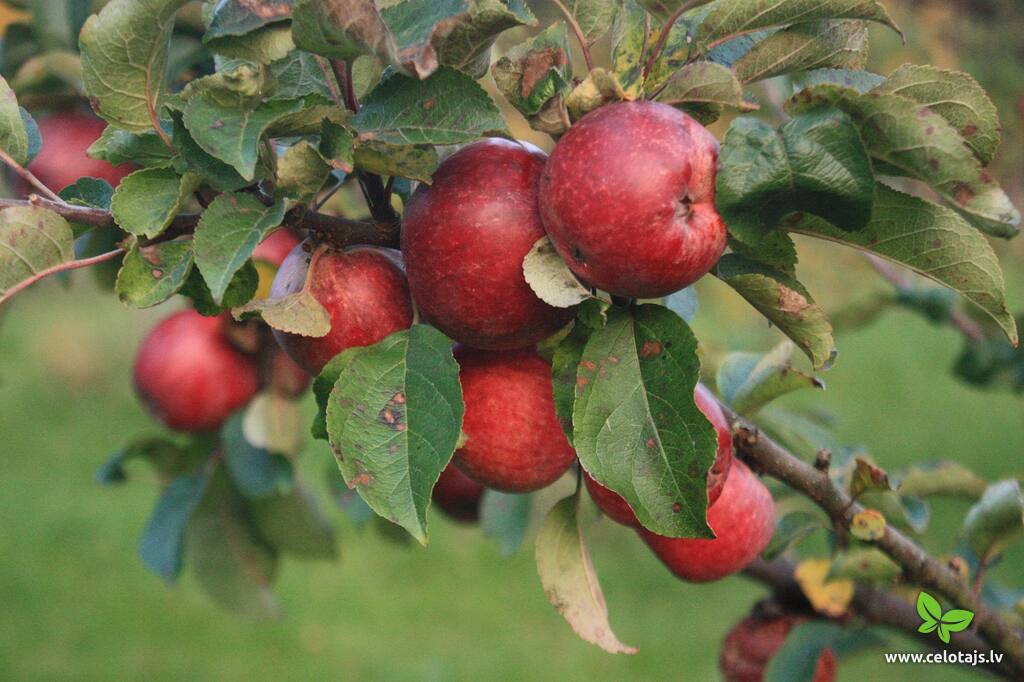
Nowadays, apple trees are the most commonly grown fruit trees in Latvia, however, in ancient times, you could only find the bitter crab apples (Malus sylvestris) here. The first large-fruited apple varieties must have arrived in Latvia several hundred years ago from Germany to be grown in manor gardens. In later years, many varieties have been introduced from Sweden, Russia, Lithuania and Poland. Nowadays, the Institute of Horticulture of the Latvia University of Life Sciences and Technologies, which is based in Dobele and Pūre, is the responsible institution for the preservation of the Latvian apple tree genes and for the breeding of new varieties.
Excellent adaptability. Research has proven that apples have at least twice as much genetic diversity as humans, meaning that they have excellent evolutionary potential and adaptability. The planting of an apple seed results in a tree that is completely different from its parents, which is why both the Latvian cider makers and the Institute of Horticulture are carrying on with experiments, developing new apple cultivars that might be especially suitable for making cider in Latvia. Cider production begins with choosing your apples.
There are three types of cider apples:
- sweet apples, which are rich in sugar and have a high content of alcohol;
- acidic apples, ranging from lightly acidic to very acidic, which give the cider a fresh and slightly sour note;
- bittersweet and bitter apples, which are rich in polyphenols that give the cider structure and bitterness of a higher or lower intensity.
In order to achieve the desired harmony of flavour, cider is usually made by combining several apple varieties (even several dozens), using all of the cider apple types. Ciders made from only one or two varieties of apples are far less common and are sometimes specially labelled. For achieving greater variety, other fruits and berries are often added to cider in Latvia, with the most common ones being quince, blackcurrants and chokeberries.
